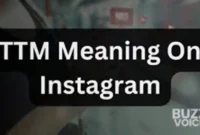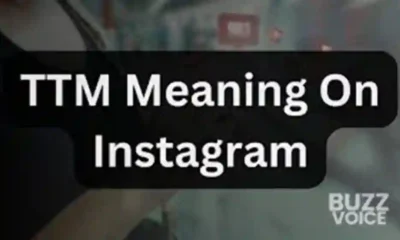Social Media
The most effective method to Deal With Bad Reviews Of Your Business Online

Terrible criticism can be difficult, both emotionally and financially. This is the way to answer negative reviews of your business. Pessimistic reviews of your business can be excruciating, both emotionally and financially. Reviews always help to build up your relationship with the business owner and customer. So buy Google Reviews to increase your online credibility.
This is some solution for them.
It’s impossible to get around it: terrible reviews occur.
Furthermore, seeing a client say terrible – frequently pernicious – things about your business on Yelp, Facebook, Twitter, web journals, or pretty much elsewhere? All things considered, it sucks.
We as a whole strive to fulfill our clients, so the possibility that some are so angry with us that they decided to stand up to the world about it tends to be excruciating to manage.
However, today, I will show you why terrible reviews aren’t downright awful all things considered.
Also, indeed, there is something you can do about them (however it probably won’t be your thought process).
Priorities straight: Bad Reviews Don’t Mean That You’re Bad
The principal rule of managing pessimistic reviews is to not think about them literally.
That is because as your business develops, you will see more and more of them.
Assuming you have 100 reviews, and five of them are terrible, and you let those five get to you, then, at that point, how can you go to manage 50 awful reviews out of 1,000, or 500 awful reviews out of 10,000?
There are five significant things to grasp that can serve to reevaluate our contemplating of awful reviews:
1) Your Business Might Just Not Be Ideal for the Customer (And That’s a Good Thing).
our business isn’t appropriate for everybody.
Furthermore, that is something incredible because you can’t be perfect for everybody.
To be the best answer for someone, your item should be an unacceptable answer for someone else.
Frequently, a terrible review just comes from a client finding that your item isn’t an ideal choice for them.
Also, that is completely fine.
2) If Your Business Is ideal for the Customer, Then Their Review Is a Gift.
As indicated by a study conducted by Lee Resource Int’l, for each client who grumbles, 26 others stay quiet.
That implies that a terrible review from a decent client is a liberal gift that can assist you with rolling out incredible improvements, and at last fulfill significantly more clients.
3) A Bad Review Is an Opportunity to Shine.
Businesses screw up. No surprises there.
However, when it works out, an intriguing open door opens up: on the off chance that you recuperate from the slip-up well, you can fabricate a more grounded relationship with the client than you had previously.
Showcasing teachers Michael McCollough and Sundar Bharadwaj call this the assistance recuperation mystery:
The help recuperation conundrum is the consequence of an exceptionally positive help recuperation, causing a degree of consumer loyalty as well as client faithfulness considerably more prominent than that normal if no assistance disappointment had occurred.
Great client care isn’t about totally disposing of errors — an incomprehensible errand — yet about utilizing the open door made by a mix-up to construct a more profound relationship with your client.
4) The Customer Might Just Be Having a Bad Day.
We as a whole have terrible days.
Furthermore, on those days, we’re undeniably more liable to attack others; Roger Gil, MAMFT, a social researcher, proposes that perhaps the most well-known way that pressure shows itself is uprooted outrage.
On our terrible days, we’ve presumably all been that awful client.
I realize I have.
In any circumstance where you’re feeling went after or irritated, it’s useful to make a stride back and look at the situation from your client’s perspective; a large part of the time, their way of behaving doesn’t have anything to do with you.
5) The Customer Might Just Be a Jerk.
Some individuals—incredibly few—are, truth be told, jerks.
These are the clients who:
- Make individuals go after individuals, not issues. This can include assaults on your help group, your clients, or imminent clients.
- are inclined to non-valuable input, including unnecessary utilization of foulness.
- have angry eruptions.
- These are the clients you fire right away and continue.
The most effective method to respond to negative reviews
When a lot of businesses get negative reviews, their most memorable game-plan is to attempt to get the review taken out.
This is a horrible methodology.
A terrible review isn’t the issue. A terrible review is the consequence of an issue. The genuine issue is whatever occurred between your client and your business that led to that outcome.
For genuine client assistance to win, don’t zero in on the outcome; center around the issue.
Treat the furious client similarly as you would an irritated client who hadn’t shouted out on the web: with sympathy, empathy, and a veritable obligation to make things right.
My #1 method for doing this is with the strategy spearheaded by the Walt Disney Company, a business that has 135 million individuals in its parks every year, large numbers of them furious guardians that need to pay all due respect to considerably angrier five-year-olds.
Hear: let the client recount their whole story without interference. Sometimes, we simply believe someone should tune in.
Relate: that you profoundly comprehend how the client feels. Use phrases like “I’d be baffled, as well.”
Apologize: As long as it’s genuine, you can’t apologize enough. Regardless of whether you did anything that made them upset, you can, in any case, truly be self-reproachful for how your client feels (e.g., I’m generally heartbroken that a client feels upset).
Resolve: Resolve the issue rapidly or ensure that your workers are enabled to do as such. Feel free to ask the client: “How might I make this right?”
Without accusing anybody, get to the bottom of why the slip-up happened and center around fixing the interaction so it doesn’t repeat.
Presently, the procedure was originally intended to be used with clients who approach a worker to have a discussion.
That discussion is the basic component missing from an uneven web-based review. So the way to apply the H.E.A.R.D. The strategy for clients who leave awful web-based reviews is that you want to make that discussion.
Indeed, you should respond publicly. In any case, not to defend yourself.
If you’re thinking about working with an organization, and you see a negative review, which comes from the business, could make you more certain about turning into a client?
Getting guarded and posting all of the motivations behind why the resentful client is off-base.
Being human, sympathetic, self-reproachful, and exhibiting that which they truly need to fulfill the irritated client.
The response could appear glaringly evident when we take a gander at it according to that viewpoint, which makes it astonishing to perceive the number of businesses that will attack sensible clients on review locales like Yelp and TripAdvisor.
So indeed, you ought to answer openly, whether on the review stage where your client posted, in a remark on their blog, or in light of their web-based entertainment post.
Yet, that reaction ought to be an expression of remorse for how they feel and a solicitation for a potential chance to make things right.
One of my favorite instances of this is the way that Gary Vaynerchuk answers virtually every negative review of his books on Amazon.
Here is a one-star review from a client who is troubled about his purchase:
The degree of compassion makes it simple to see why he has such countless loving fans (and blissful clients). drown them out.n Trying To Get Bad Reviews Removed, Drown Them Out
What we’ve found at Groove is that the more we apply this methodology-tackling the hidden issue as opposed to zeroing in on getting the review eliminated or changed-the more clients who, in all actuality, do leave awful reviews wind up returning and bringing them down, or altering them to incorporate how cheerful they were with our reaction.
Furthermore, treating those hidden issues, especially in the good ‘ole days, assisted us in building a lot more grounded, valuable items for our clients.
One thing that any business-especially one that gets clients from review-driven commercial centers like App Stores, Amazon, or Yelp-should do is to zero in on getting more positive reviews.
All things considered, each positive review mitigates the negative one that you could have. Ten positive reviews and one negative review could provide a client an opportunity to stop and think, yet 100 positive reviews and ten negative reviews aren’t any jokes.
One week from now, we’ll cover how to get clients to compliment your business, both on the web and off.
Related posts:


Forex & Crypto
5 Best Ways to Earn Crypto While You Sleep in 2025
Categories
- Apps (1)
- Automotive (23)
- Beauty (7)
- Business (122)
- Celebrities (2)
- Digital Marketing (21)
- Ecommerce (2)
- Education (22)
- Entertainment (39)
- Events (6)
- Fashion (1)
- Features (4)
- Finance (1)
- Fitness (10)
- Food (2)
- Forex & Crypto (23)
- General (116)
- Health (48)
- House (61)
- Lifestyle (57)
- Marketing (8)
- Parenting (3)
- Pets (10)
- Real Estate (8)
- Safety and Security (14)
- Social Media (31)
- Sports (142)
- Technology (73)
- Travel (23)






















